
When Trey Sherman & Daniel Lui set out to make a digital series about the drama of the circuit party world, they probably didn’t anticipate this much drama.
As created & directed by Lui and produced by Sherman, The Circuit follows a group of regular circuit party attendees. Among them: Ian Frost, an adult film performer; DJs Alec Brian, Nina Flowers (of RuPaul’s Drag Race fame) and Joe Pacheco, dancer Sam Gee, and Sherman himself, who also works as a journalist. The series would have followed the gang in their day-to-day lives in dating, careers and the like while also showing the debauchery of various parties they attended.
Then COVID-19 happened. Undeterred, Lui and Sherman went on filming the show via Zoom and limited in-person interviews, though on a slower schedule. Production took another harrowing turn after several cast members were involved in the so-called “Rona Rave,” a circuit house party thrown at the height of the COVID-19 pandemic. Episode 4 of the series details it at length. DJ Alec Brian also ignited a firestorm when he posted racist comments criticizing the #BlackLivesMatter protests in New York. Lui and Sherman subsequently dropped him from the show.
Queerty sat down with Lui and Sherman to talk about the series, the shifts in production, the scandalous cast members, and their vision of the circuit party scene. The Circuit streams on YouTube.
How about we take this to the next level?
Our newsletter is like a refreshing cocktail (or mocktail) of LGBTQ+ entertainment and pop culture, served up with a side of eye-candy.
So how did the two of you get involved with each other?
DL: Me & Trey have been friends since college, since 2014. I wanted to create an LGBTQ show for a while. I’ve worked in reality TV for a few years. I worked on Love & Hip Hop for a few years. But I always wanted to create more LGBTQ shows to entertain and inspire others. Growing up, there weren’t many LGBTQ shows to watch—very few that would share our story, or where we could see ourselves on the screen. Queer as Folk was a big inspiration.
TS: Daniel was one year behind me. We both graduated from the University of Maryland. We were on the same Kickball team in DC. Then he moved to New York pursuing a filmmaking career. Then one thing led to another, and I got a job in New York. I stayed on [Daniel’s] couch for a week while I found a place to live. So our friendship has always been there.

Terrific.
TS: There’s never been an instance where Daniel comes to me with an idea, and I’m like naw. I remember, specifically, we were on the train to Fire Island last year. He revealed this idea like it was the next big thing. I was a bit skeptical at first, but I told him I’d help him out.
Why a series about Circuit party crowd? What was your experience with that world prior to the show?
DL: I’ve been part of the circuit community since 2015. I was exposed to the community when I started to study abroad in London. It was fascinating to be part of an underground community that not many people knew about. I remember in college none of my friends knew about circuit parties. Then [Trey & I] went to New York together and discovered the scene there. That’s when we started getting more involved.
What’s the appeal?
DL: I noticed that underground communities are something people want to know more about. For example, the underground ballroom culture is starting to become mainstream. Drag queens and the drag community are becoming mainstream. That made me realize that people want to know more about these communities and LGBTQ groups.
Related: DJ at NYC’s ‘Rona Rave’ says it was a “stupid decision” to attend party
TS: Just to add, as Daniel said, we’re members of the community. We go to these events. There’s a sort of mystique about circuit parties in general. The first one I ever went to I didn’t even know what a circuit party was. At Pride, there are these really expensive events. Two friends and I decided you usually get what you pay for, so we decided to check them out. And as it says in the show: the life, the music, the dancing, all of that in an underground space—it’s a good topic for a show. I shared the trailer with people outside the circuit community, and universally, everyone looked at it and said “That’s dope. Where can I watch?”

That’s awesome.
TS: The fact that it’s so mysterious and hasn’t been shown in a widespread way…
DL: Like Nina says in the first episode, it’s a celebration of life. It’s fascinating to see everyone in the circuit community come together just for these big parties and to celebrate the community. It’s beautiful.
TS: I think showing the fuller lives of people in the community is a good way to portray it.
Trey, you’re producing and appearing on camera. Were you at all apprehensive about doing so?
TS: I was initially hesitant about appearing on camera.
So what made you decide to do so?
TS: Daniel.
[Laughter]
DL: It did take a lot of persuading. I had to tell him he’s wonderful on camera.
TS: I won’t disagree.
[Laugther]
TS: The main reason I hesitated was mostly based out of fear. And I try not to make decisions based out of fear. I thought of it as an opportunity to share something with the world. In my career so far I’ve been behind-the-scenes, so this was a chance to see what I could do on camera. I think I tend to have a good perspective.

You do. All of your main characters have interesting perspectives from one another. What made you light on Ian, Nina, Alec, Joe as the main cast?
DL: That is a good question. We really did want to show the circuit community the best that we could, but we had a very limited budget and resources. Ideally, we’d be traveling to every major city—Barcelona, London, Berlin—to show every aspect of the circuit world. But we don’t have that budget. I spent all the money out of my own pocket to make this project possible, so it was whoever was willing to volunteer.
TS: It was who we could reach that was interested, and would be a great fit. There was also an emphasis on different players in the scene. A DJ, partygoers, dancers, a porn star…
DL: Event producers, yeah.
We don’t see much in the way of drug use on camera, but we know it’s going on. Trey, you visit Ian in the second or third episode when he gets thrown out of a party for overdoing it. Did you see much drug use during filming? Why did you not include it?
TS: I think drug use exists in many places, in general. People become intoxicated in bars, at circuit parties, at home. It was a conscious decision not to focus on that for this show. While it happens at circuit parties, and I can’t say in all the footage that we captured that there is no drug use, but it’s not what The Circuit is about. I think a lot of people have that misconception that circuit parties are a bunch of muscle boys on drugs. We just wanted to focus on positive things.
DL: Just to add to that, I definitely did want to show there is more than just people getting intoxicated at parties. These are actual human beings. People have real-life stories that are interesting to follow. Circuit parties are just about everyone coming together and celebrating that.

What would surprise our readers the most about the circuit crowd? What’s the biggest misconception?
TS: People would probably be surprised that it’s one of the best examples of the way that our community takes care of each other. Everyone is very happy and friendly because they’re in a space where they can be more care-free. There is hardly ever an instance where someone’s stealing, or if the coat check line is backed up, people are making jokes with one other. It reminds me that the circuit community is made up of really good people.
DL: Yeah. Like Nina Flowers mentioned in one episode, it’s like a family. If you travel from circuit parties from LA to New York to Maimi, all these cities, you start to see a lot of the same people. It’s really a community of people. We’re really friendly, we make friends, and we look out for each other.
In regards to your most recent episode about the COVID rave that Ian and Alec attended, did you know about it when it happened?
TS: We found out like everybody else: afterward on social media.
DL: Yeah. We were shocked.
One thing that I believe Ian mentions is that the party had gone on for several days at different locations. Is that standard for a circuit party?
TS: I wouldn’t even say it’s related to circuit parties. This was a house party.
DL: Yeah. It wasn’t really a circuit party. I mean, members of the circuit community were there, but it was really a weekend out party. It was interesting to see that a lot of news sources were reporting it was a party from Monday to Tuesday. It was actually from Saturday to Tuesday.

So what does that say about the party? I’ve never heard of a house party that goes on for days…
DL: We weren’t there, so we don’t know too much. We wouldn’t say this is a typical experience.
As a director and producer, you’re really having to improvise with your cast, based around whatever happens to them. How does COVID, or a Rona Rave, challenge you as a creative team? How does it impact your decisions?
DL: Their involvement in the party was unexpected, and affected the whole plan for our story. For example, we wanted to see how Alec Brian would do in his gig with Jake Resnicow. He’s trying to become a bigger DJ in the scene. It definitely changed our plans. We had to adapt accordingly.
TS: There were multiple curveballs thrown. We had to reevaluate. We knew we wanted to show how the coronavirus had affected the castmember’s lives. Then we were forced to include a very important part of the story, which was that party.
Does that affect your confidence? Is it a scary feeling?
DL: Honestly yes. It’s been very tough for us. It was very discouraging, but we knew we weren’t going to give up everything we’d worked for over the past year because two of our cast members decided to attend the Rona Rave.
TS: We took a lot of time just talking, the two of us, about how to approach and handle it. I wouldn’t say it was scary. But it was a challenge. I wasn’t afraid, but the stakes were higher.
DL: It was a lot of pressure.
So obviously COVID-19 has affected production. What’s your outlook?
DL: We’re still brainstorming. We have at least two more episodes this season, potentially more depending on how the audience reacts. We want to cover post-COVID-19 life and how people adapt. We also want to talk about racism, since that is an issue that has been going on in the LGBTQ community and the circuit community since the beginning.

TS: After the last episode, which felt very timely, it feels like the show has shifted to integrate that into every episode. We can’t ignore these nationwide protests. They also affect everyone.
DL: We can’t be silent.
Well, let’s talk a bit about racism in the circuit world. Both of you are men of color. What have your experiences been in terms of the attitudes you encounter? How does racism reveal itself in the circuit world?
TS: The ways racism manifests in this country in general…they don’t go away when you go to a circuit party. The feeling when you walk into a room and most of the people are white—I do my best to not let potential racism affect me. The way someone treats me based on the color of my skin? In some ways, it’s very obvious when it’s happening. Sometimes, as a black man, people have preconceived notions. But, like I said, the circuit community over-all is, for the most part, a fun-loving bunch of people. But, like the rest of the world, there’s subtle racism people don’t know about.
DL: Not everybody is racist in the circuit community. Some people are, some aren’t. That’s the reality.
TS: I will say though, I think even since I started going to circuit parties, it has become more diverse. I haven’t experienced any sort of overt racism that incited rage at a party. It’s everyday microaggressions that exist everywhere.
DL: Usually, it’s silent racism or subtle racism.
TS: One thing that bothers me is how people can have a non-diverse group of friends that they associate with all the time, as if it was just by accident. Having an all-white immediate friend circle does not happen by accident. I take to Instagram at times and scroll through who people follow. It’s crazy the number of times you see no people of color. And some members of the circuit community are guilty of that.

And as you say, that’s not unique to the circuit world. One of the recurring themes in the series is how everyone is searching for love. Dating, party boyfriends, whatever. Do you think the circuit world—and all the drugs and sex that go on there—are a reflection of that need?
DL: Yeah, a lot of people are looking for love in the same way people go to bars to look for love. People potentially find the love of their life, or just a boyfriend for the night. Everyone is looking for different things.
TS: I go to a circuit party with the music in mind. Who is spinning is vital to [me] attending. I don’t think anyone would mind if they had a special connection with someone and turned it into something great. That’s somewhere in the back of your mind.
So last question: in producing the show, what have you realized about yourselves?
DL: It might sound cliché, but I realized that if you believe in yourself, anything is possible. Before this, I was working as an assistant editor on a TV show. A lot of people didn’t believe in me or wouldn’t give me a chance to direct my own show. I didn’t want to wait another 10 years, so I decided to go do it. And we actually did it.
TS: I like to think it’s always worth it to do something brave. I guess I realized that I’m brave. I was shy as a child. Since coming out and becoming the person I am today, I’m pretty far from the very quiet kid I was. So it just reaffirmed that bravery is worth it.
The Circuit streams free on YouTube.


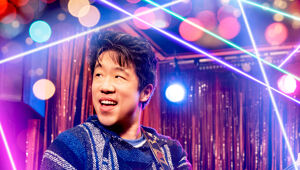
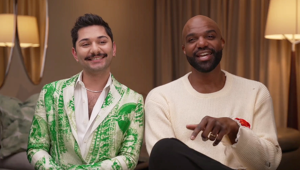
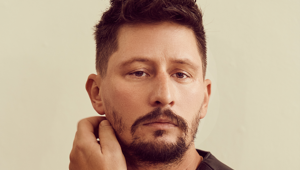


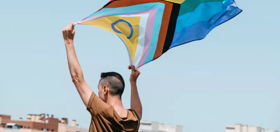
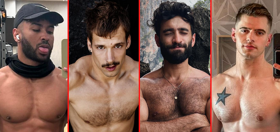



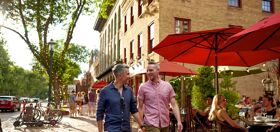

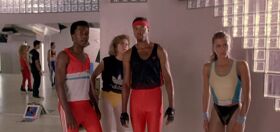
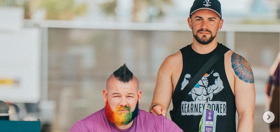
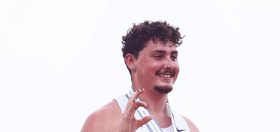


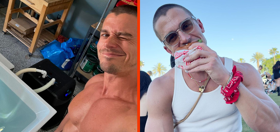
Chrisk
So it’s going to be different because it’s not going to be focused on the drug use this time. Just lots of drama. Lol
CenterRight
Just how many gays who go to these circuit parties do hard drugs? If it is just 5% as I suspect, I don’t think it is a big deal. What I am against is the amount of anonymous sex and the reckless behaviors like hotel orgies and online hookups that take place in and out of the parties. Glad the White Party in Palm Spring was canceled this year.
AnthonyS23
It’s closer to 50%.
Godabed
It’s not going to focus on the Pnp parties afterwards, or the overdosing? Listening to that aspect it can sound kind of dangerous, because if you’re going to try to make this mainstream. It needs to depict all the sides of it. Pretty young circuit queens OD all the time.
Also something odd no mention of the Winter Party which spread the Conorona Virus.
That being said, I like the idea of highlighting different aspects of the LGBTQAA+ community, I think these two have a good trailer, and I’d be curious to see how this show goes. Minus the problematic pornstar and DJ. I hope someone else volunteers for the show if you get another season.
Prax07
Shit like this just needs to go away, period.
queermatt
” we just focus on the positive things…” yeah – so vapid and so privileged
my72bronco
Vapid, a word not used enough but appreciated when read.
Cam
It’s weird to me that they keep saying about how “Mysterious” the circuit parties are and how nobody knows about them.
Um….yeah, maybe because people stopped talking about them because they’ve gone on for decades.